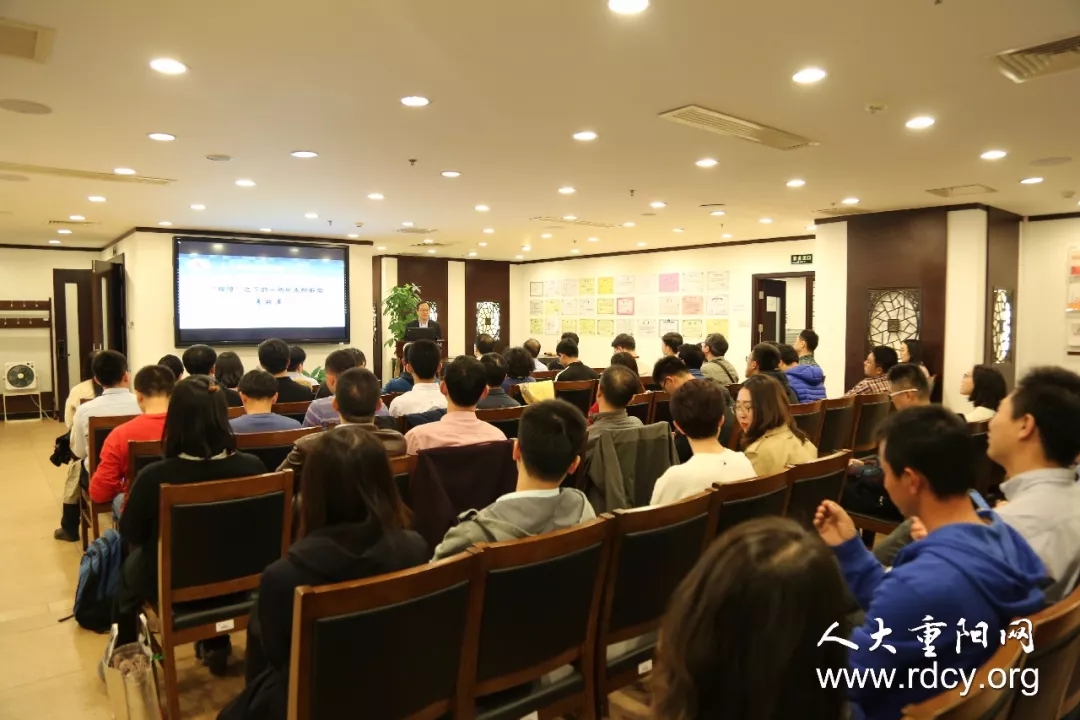Picture
Your Present Location: HOME> PictureEconomist Lu Zhengwei interprets China's Economic situation
How to view China’s current economic situation? Where does macro policy go? On the evening of April 16, Lu Zhengwei, chief economist of Industrial Bank and chief economist of Huafu Securities, was invited by Chongyang Institute for Financial Studies of Renmin University of China (RDCY), to make an in-depth interpretation for these issues.

Lu noted that China's economic development is facing a more complex and severe environment this year, with more and greater challenges and risks. So it is necessary to be prepared for a tough battle and put stable growth ahead of risk prevention.
According to development economics, economic growth does not necessarily mean development, while there will certainly be no development without growth of the economy. In the current situation of increasing downward pressure on the economy, the introduction of policies and measures should be conducive to stabilizing expectations, stable growth, and adjusting the structure, and we should properly grasp the rhythm and intensity of risk prevention and control, and prevent the superposition and amplification on the effect of economic austerity measures.
This year's government work report also stressed that "we should give full play to the fundamental role of consumption and the key role of investment, and stabilize the effective domestic demand." It shows that investment projects should be accelerated.
Then, Lu made a analysis on China's economic situation this year from the perspectives of investment, consumption and export.
For traditional three major investment forces, manufacturing investment has declined while real estate and infrastructure investment growth rate pick up. The rebound in infrastructure investment can be expected due to the acceleration of project approval and the availability of funds, as shown by the investment rebound in in the transportation. For the real estate investment, according to the statistical data, most of the cities where house prices rose month on month.
Manufacturing investment is related to the enterprises profit and capacity utilization rate. At present, due to the decline of the utilization rate of enterprise capacity, the possibility of manufacturing investment recovery is small.
From the perspective of consumption demand, the furniture, oil and its products, household appliances have picked up, while there is a clear slowdown in the manufacturing industry, and the acceleration on real estate consumption will be very difficult. In this sense, consumption will rebound to a certain extent, and after that it will enter the state of interval shock.
In terms of exports, the data shows that the export growth rate of the traditional major exporters has been negative so far this year, and China's export growth rate turned positive in March, some of which were due to the early export effect caused by the reduction in export tax rebates. The PMI of the world's major economies peaked in the first quarter of last year, and now most of the major countries are negative except that of the United Kingdom and the United States. This means that the export situation this year is not optimistic.

He added that the new engine of China's economic growth can be found in the tertiary industry. Because of the excess investment in the secondary industry and the serious shortage of investment in the tertiary industry, entrepreneurs should actively seek transformation.
At the end of the lecture, Lu concluded this year's macroeconomic policy guidelines, mainly focusing on the financial supply-side structural reform and the unprecedented improvement of the status of venture capital. There is pressure in the economy, but we have confidence in reaching the final growth achievement. In the long-term plan, market-oriented reform of the tertiary industry is needed; In terms of the policies formulation, we mainly take into consideration on six aspects: stable growth, stable leverage, inclusive benefits, cost reduction, stable exchange rate, and risk prevention.























































































 京公网安备 11010802037854号
京公网安备 11010802037854号





